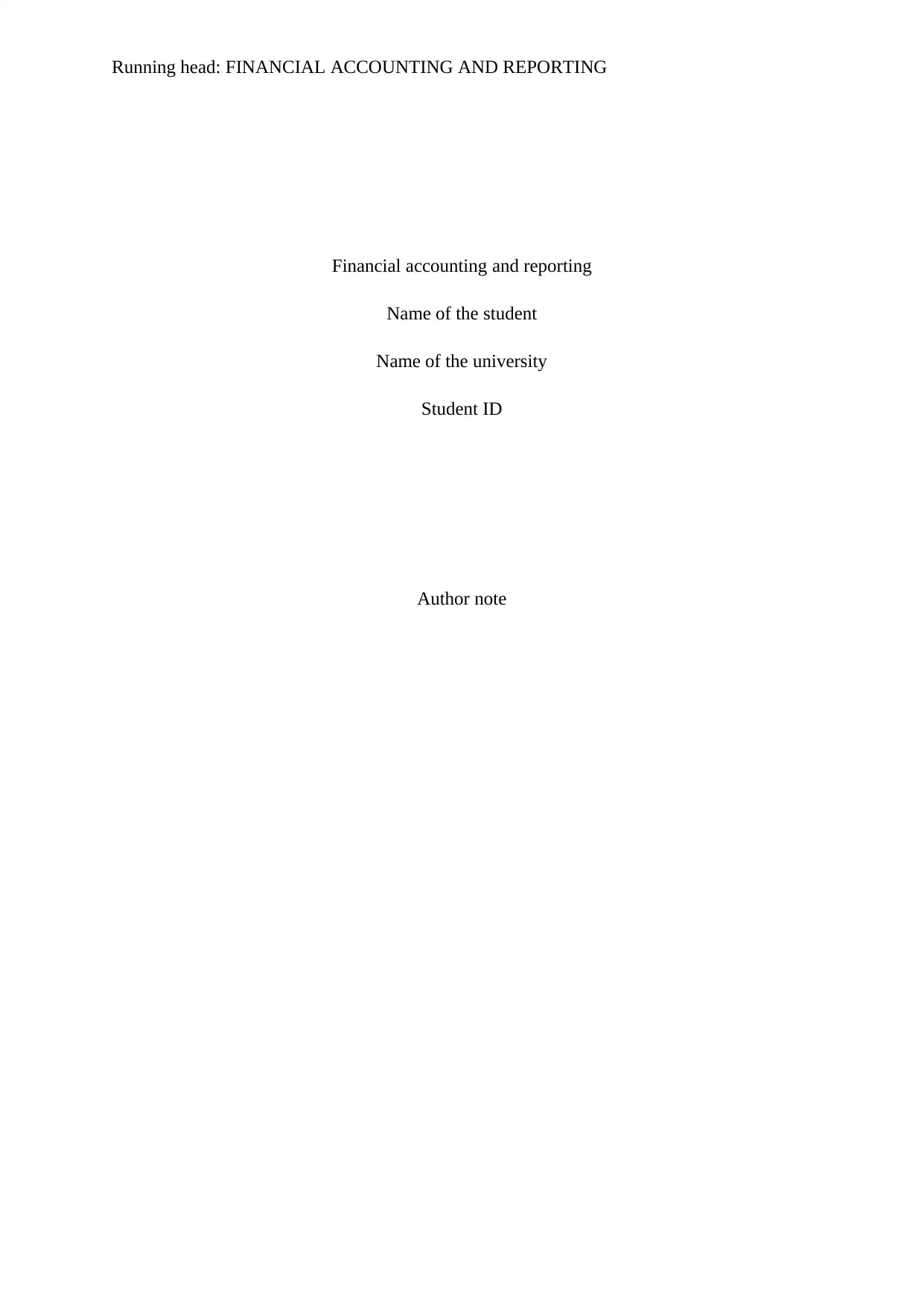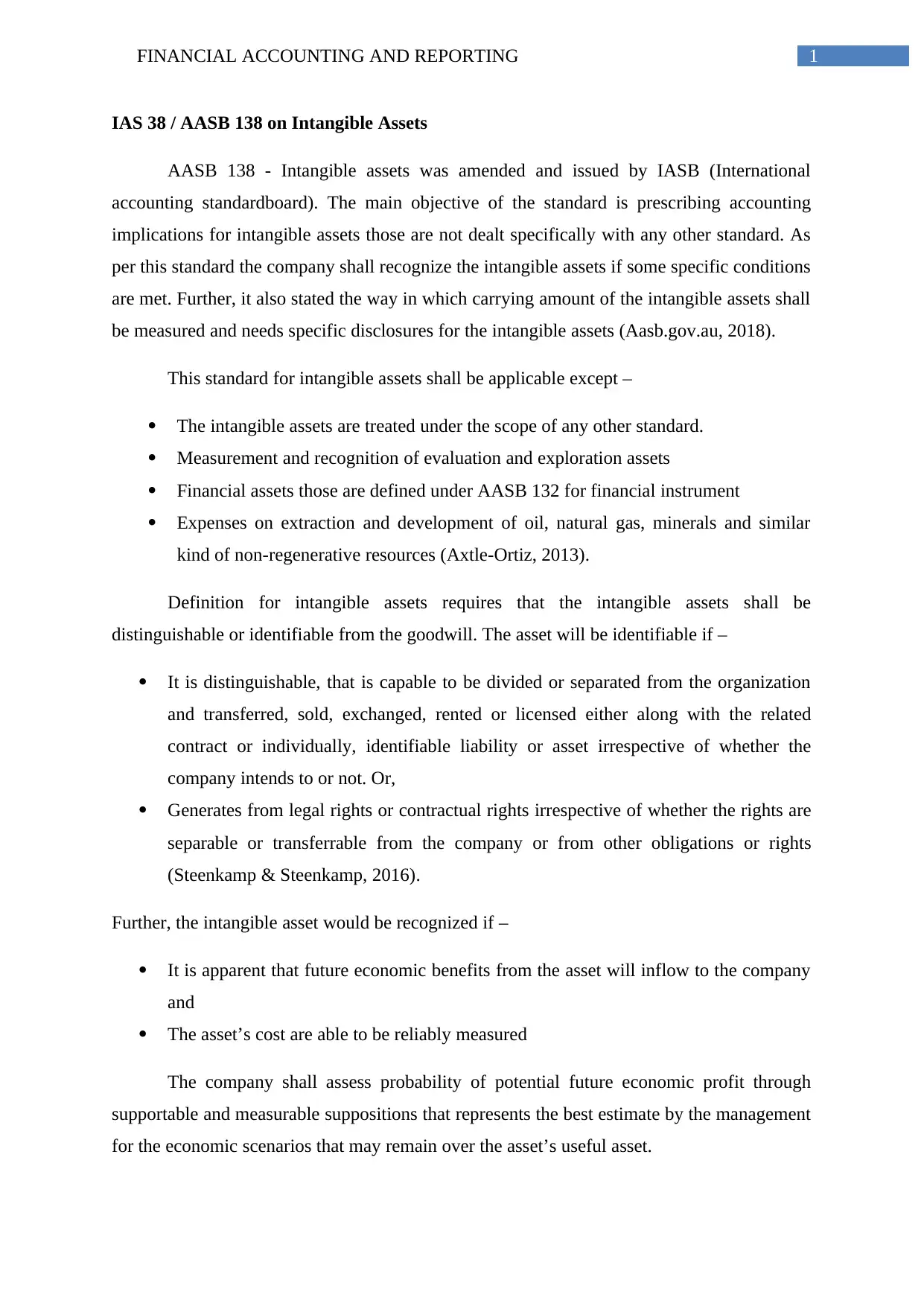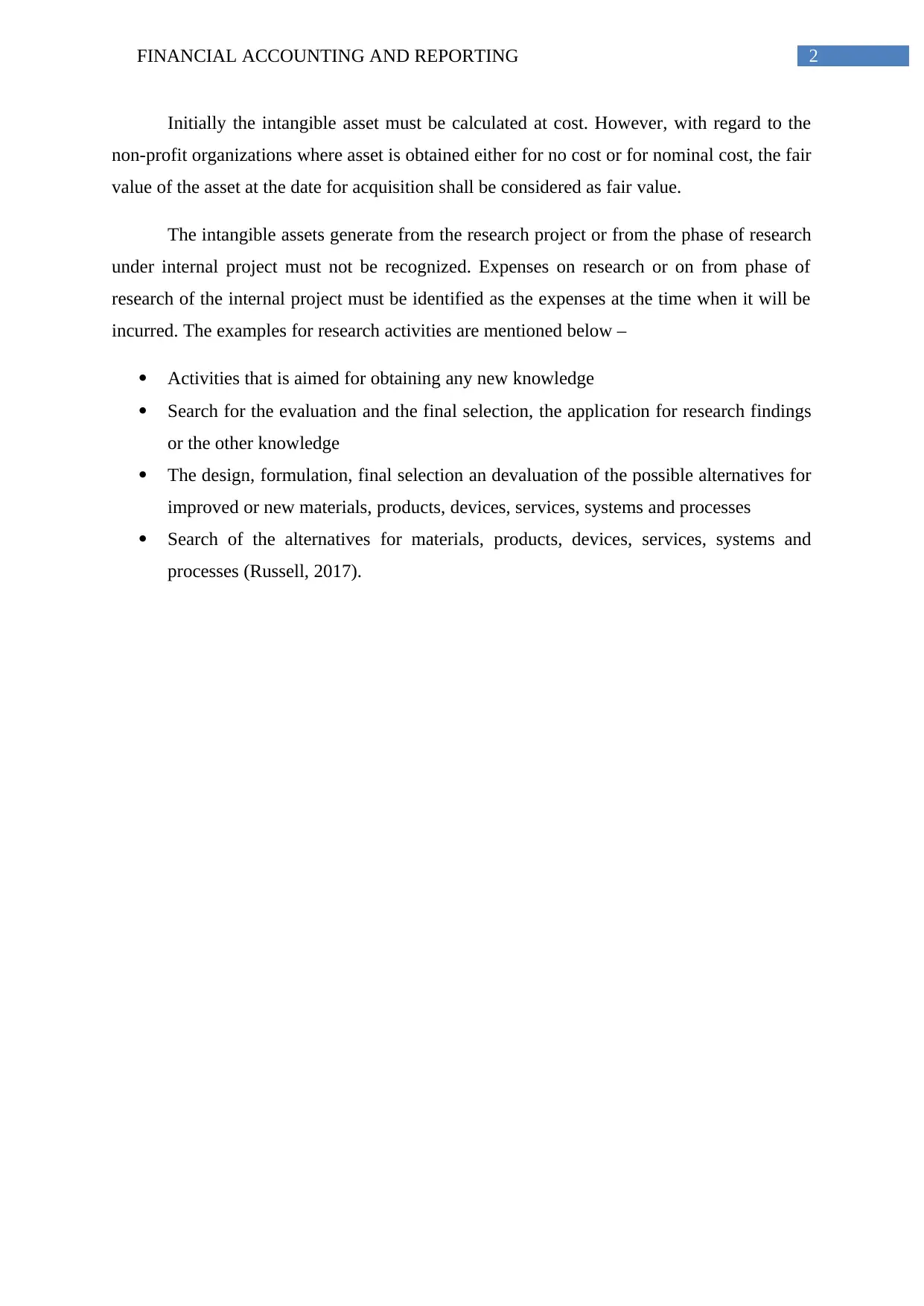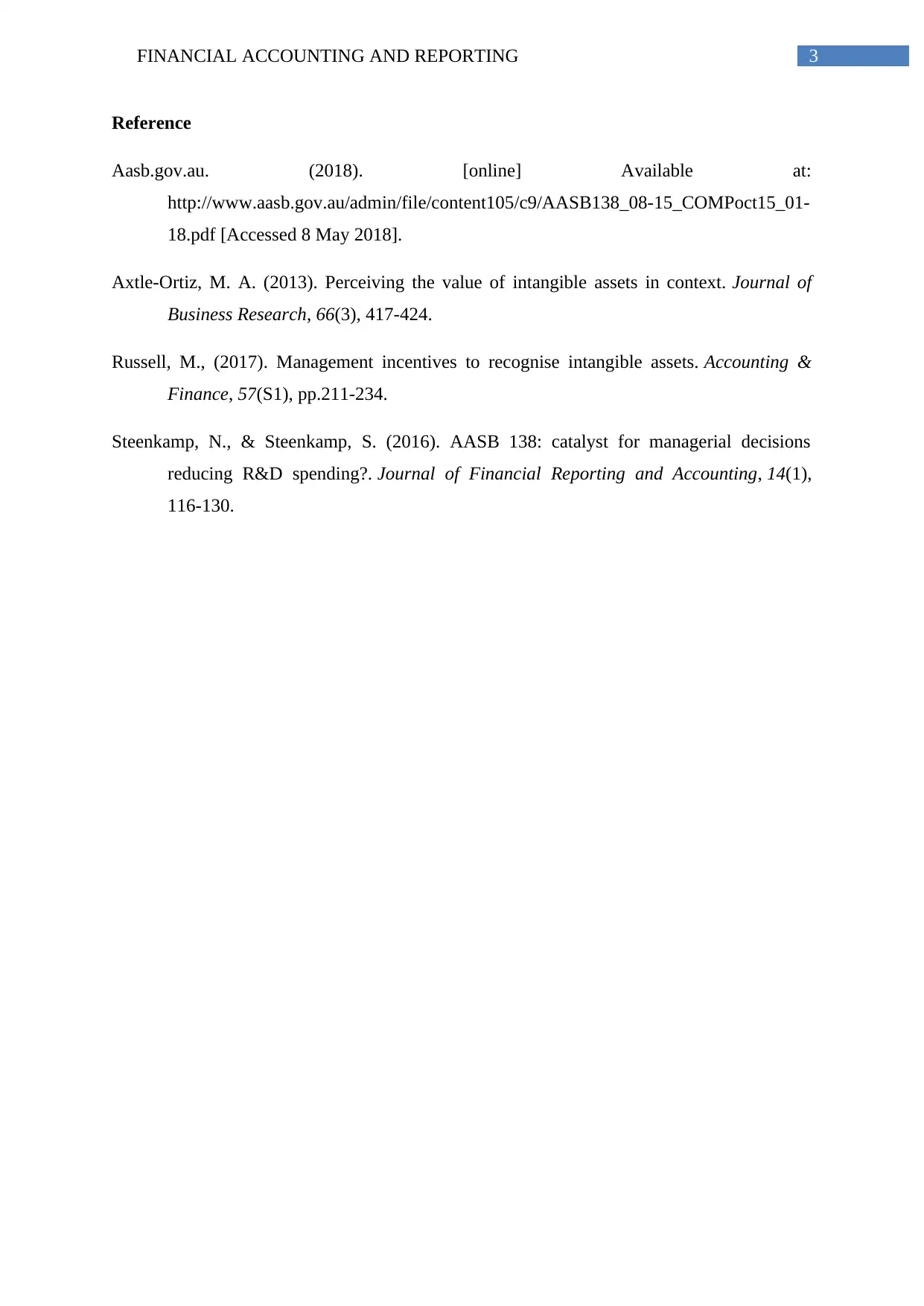Financial Accounting and Reporting 2: Analysis of Intangible Assets
VerifiedAdded on 2021/06/15
|4
|679
|63
Report
AI Summary
This report focuses on the financial accounting and reporting of intangible assets, specifically addressing the guidelines outlined in AASB 138. It begins by defining the standard's objectives and scope, emphasizing the recognition criteria for intangible assets. The report details the conditions under which intangible assets are recognized, highlighting the importance of future economic benefits and reliable cost measurement. It differentiates between identifiable and unidentifiable assets, discussing their implications. The report also covers the initial measurement of intangible assets at cost, with special considerations for non-profit organizations. Furthermore, it clarifies the treatment of research and development expenses, stating that research phase expenses must be recognized in the period incurred. The report offers examples of research activities and provides a comprehensive overview of the standard, supported by relevant references.
1 out of 4










![[object Object]](/_next/static/media/star-bottom.7253800d.svg)